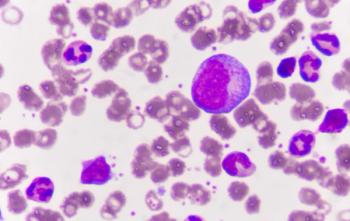
For Survivors of Breast Cancer, Weight Training Helps Fend Off Physical Decline
Weight training was shown to help stave off deterioration of physical function in breast cancer survivors, conferring a benefit twice that of women in a control group who did not participate in the weight-lifting intervention.
Weight training was shown to help stave off deterioration of physical function in breast cancer survivors, conferring a benefit twice that of women in a control group who did not participate in the weight-lifting intervention, according to a post hoc analysis of results from a randomized trial.
Studies have shown that physical function in the nation’s more than 3 million breast cancer survivors can decline more rapidly than it does in women who have not been diagnosed with cancer. Poor physical function is not only associated with premature mortality, but also increases the risk of falls, fractures, disability, and frailty at a younger age.
For this study, Kathryn H. Schmitz, PhD, MPH, and colleagues at the University of Pennsylvania’s Perelman School of Medicine examined data from the Physical Activity and Lymphedema (PAL) Trial conducted between October 2005 and August 2008 comparing a twice-weekly, slowly progressive, weight-lifting intervention with standard care in a group of 295 breast cancer survivors, all of whom had at least 1 lymph node removed and were cancer-free at the start of the study.
Schmitz, a professor of epidemiology at Perelman, also was an investigator on the original PAL trial which evaluated lymphedema onset in participants after 1 year of weight training versus standard care controls, but that trial did not specifically examine the effect of the intervention on physical function, the purpose of the post hoc analysis reported online May 11, 2015, in the Journal of Clinical Oncology.
In the PAL study, participants were evenly divided to receive the intervention—involving a 12-month fitness center membership that included 13 weeks of twice-weekly sessions with an exercise professional—or usual care.
The exercise sessions included stretching and strengthening of major muscle groups, aerobic warmup, and weight lifting. At the conclusion of the supervised weight-lifting, participants were told to continue the same exercise prescription for an additional 39 weeks; weight-lifting adherence was determined by attendance logs, and those in the experimental arm were contacted by exercise professionals when they missed sessions.
Incident physical deterioration, defined as deterioration of ≥10 points on the physical function subscale of the 36-item Medical Outcomes Short-Form questionnaire (SF-36) after 12 months, was the primary outcome for this analysis. Study participants were asked to perform 10 tasks involving such activities as lifting groceries, climbing stairs, and walking distances ranging from one block to one mile, yielding a composite score for the 10 items on the subscale.
Prior studies have linked a 10-point or more deterioration in physical function to premature mortality among breast cancer survivors, with the risk increasing by 6% for each 10-point decrease in physical function. This physical decline results in a quality-of-life burden similar to that from having congestive heart failure or chronic lung disease, the study authors noted.
After 12 months, 24 of 147 participants in the control arm (16.3%) experienced incident physical deterioration, compared with 12 of 148 (8.1%) in the weight-lifting group (relative risk, 0.49; 95% CI, 0.25-0.96; P = .04). Participants in the weight-lifting group also had increased upper and lower body strength compared with controls as measured by 1-RM bench press strength (5.0 + 0.8 vs 0.1 + 0.7 kg, respectively; P < .001) and 1-RM leg press strength (21.0 + 3.2 vs 3.1 + 3.1 kg; P < .001). No serious adverse events were found to be connected to the weight-lifting intervention.
The authors noted that their post hoc analysis marks the first to demonstrate “that weight lifting prevents the deterioration of physical function compared with standard care using a ≥10-point decrease on the physical function subscale of the SF-36 questionnaire.”
They said the findings suggest a need for further study, looking specifically at the role of aerobic exercise (eg, walking), in reducing the likelihood of developing a major mobility disability in breast cancer survivors, as well as research identifying which survivors may be at greatest risk for physical deterioration.
“These data are hypothesis-generating,” the authors wrote, “… [and] will be useful to inform the development of a confirmatory study to provide conclusive evidence to shape clinical practice and maximize the health and longevity of survivors of breast cancer.”
Brown JC, Schmitz KH. Weight lifting and physical function among survivors of breast cancer: a post hoc analysis of a randomized controlled trial [published online ahead of print May 11, 2015]. J Clin Oncol.
Newsletter
Knowledge is power. Don’t miss the most recent breakthroughs in cancer care.

















































































